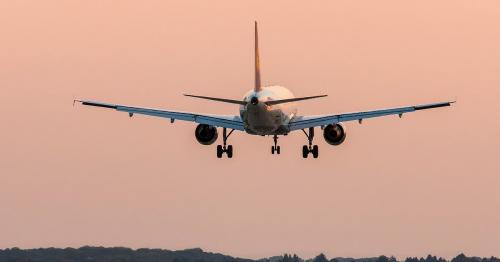UAE airports drive Mideast air traffic surge

Traffic demand was at its highest in major international hubs in the Middle East such as Dubai, Abu Dhabi, Riyadh and Qatar due to the high performance of the world’s largest aviation hubs even though some countries were hit by geopolitical crises.
As per the latest data published by the International Air Transport Association (IATA), passenger demand by Middle Eastern airlines rose 8.7 per cent year-on-year in November 2024, according to the organization. The capacity was up 3.9 per cent from a year earlier and the load factor was 81 per cent (up 3.6 per cent from the same period of 2023).
In Middle Eastern and Asia Pacific carriers load factor grew by the highest percentage of all these regions globally total revenue passenger-kilometre (RPK) in the world increased by 8.1 per cent YoY in November, continuing to top historical highs. ASK, or seats per kilometre (ASK) increased by 5.7 per cent YoY behind demand. The passenger load factor (PLF) was up 1.9 percentage points from last year and was 83.4 per cent, a record for November, said Iata’s director general Willie Walsh.
According to Manoj John, founder & CEO of Dubai-based AeroConncetions, the surge in traffic came from top hubs of the UAE and especially Dubai Airports which is set to record 5.7 per cent year-on-year growth in traffic to 91.9 million passengers (compared with 86.9 million in 2023) in 2024, the highest in history. "More direct traffic than transfer traffic has been recorded at Dubai International Airport and shows Dubai becoming a world-class tourism destination," John, a pilot, told me.
All major international routes areas in the Middle East are growing very rapidly, and Middle Eastern airlines’ latest results are the same. "The clear-cut solid performance of Gulf countries underwrote this spike in air travel. "Middle East-Asia route area is up 9.5 per cent in RPK over last year, and Africa-Middle Eastern route area is the fastest growing with 12.7 per cent YoY growth," IATA analysts added.
It was the Middle East and Asia Pacific that took the backseat on the strengthening global momentum with RPK respectively growing by 8.7 percent and 19.9 per cent YoY respectively. Intense geopolitical shifts and conflicts in the Middle East had no effect on the most recent figures and traffic in the countries of concern remains lower than before the pandemic.
International passenger demand worldwide increased by 11.6 per cent in November 2023. Capacity was up 8.6 per cent year on year and load factor was 83.4 per cent (+2.3 per cent versus November 2023). Prosperous performance by carriers in Europe and Asia-Pacific powered this double-digit growth in demand.
Demand for domestic traffic increased by 3.1 per cent from November 2023. Capacity was 1.5 per cent higher than in November 2023 and load factor was 83.5 per cent higher (+1.2 per cent from November 2023).
"The month of November was also a robust one for air travel demand growth at 8.1 percent for the full year. Another issue that a month brought up again was the supply chain problems that are denying airlines the aircraft they require to service ever increasing demand. ‘We’re outgrowing capacity by 2.4 per cent behind demand and load factors are at all time highs,’ said Walsh.
The IATA chief also said airlines are losing out on customers, updating their products and driving a greener operation by failing to deliver the aircraft on time. "It’s a New Year’s resolution for the aerospace industry in 2025 to find a speedy, durable fix to their supply chain problems," Walsh said.






Comments